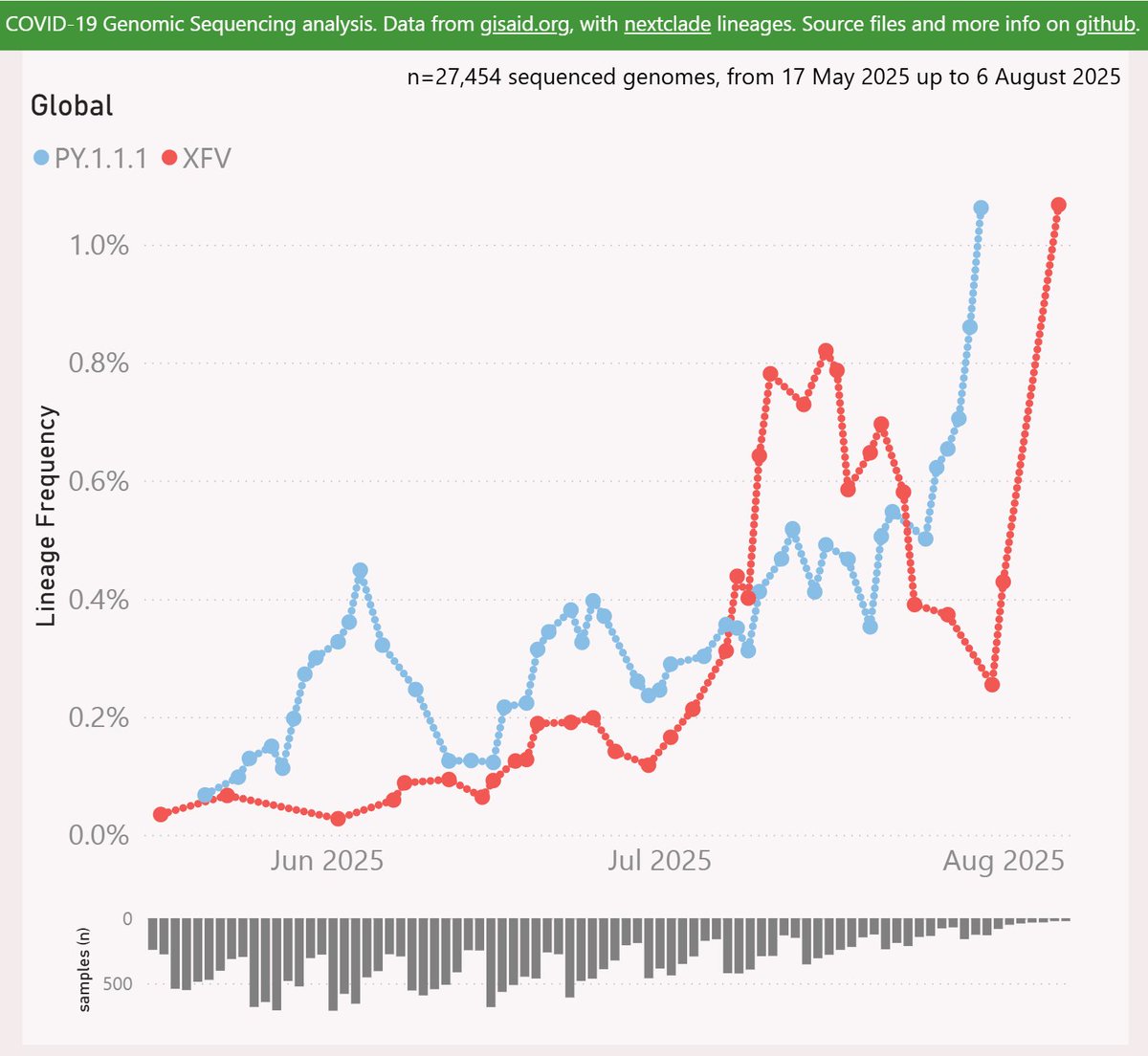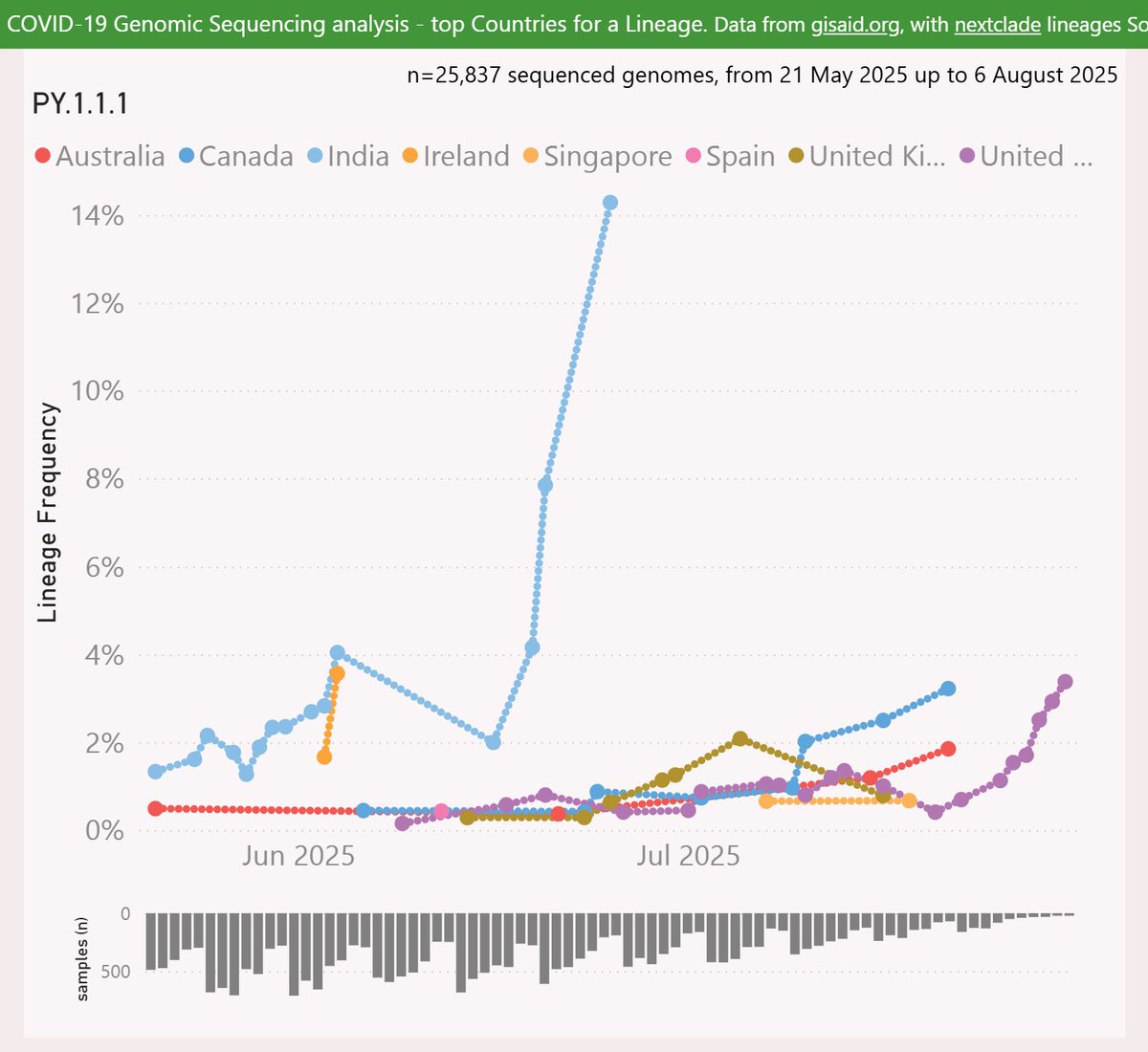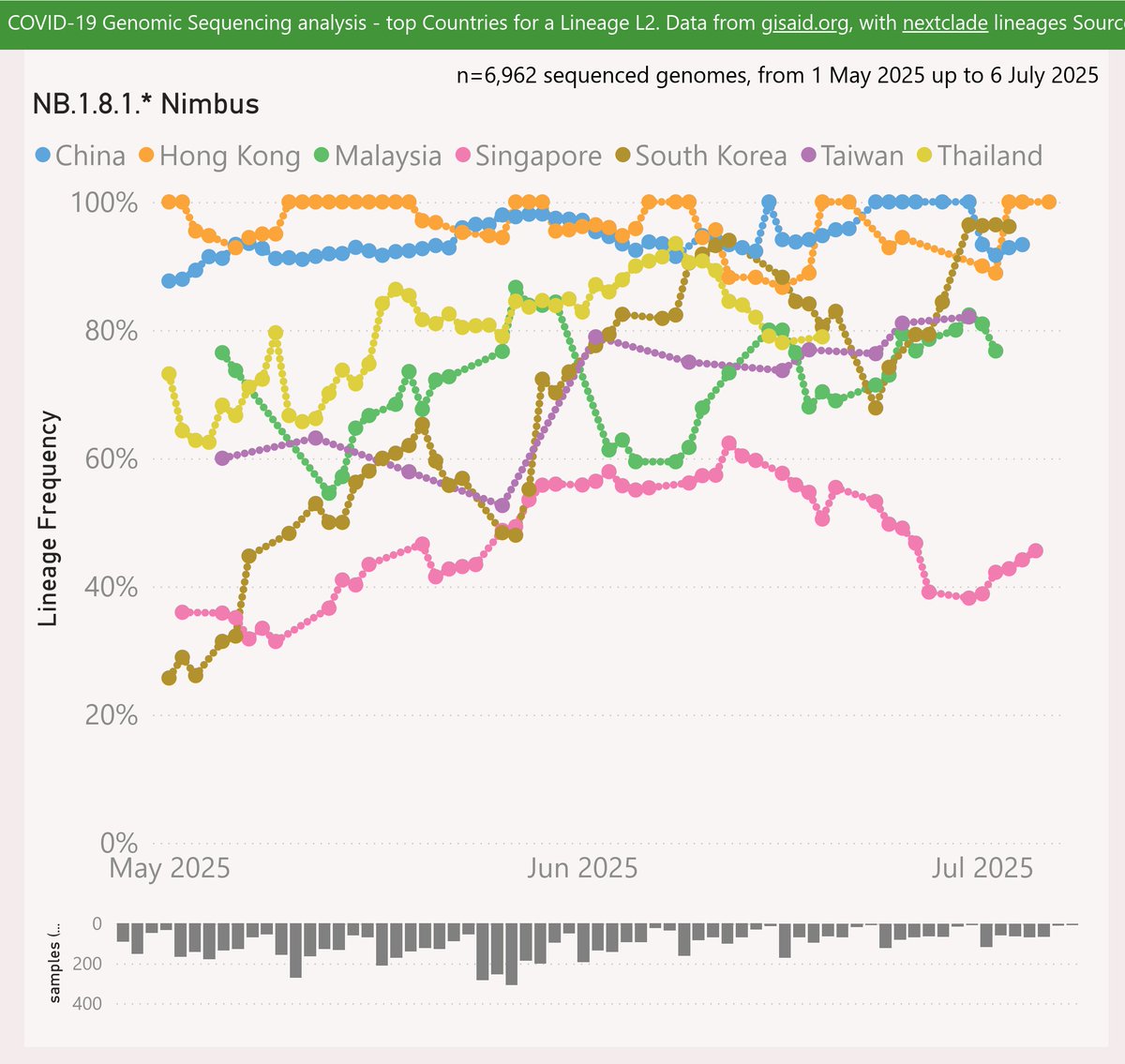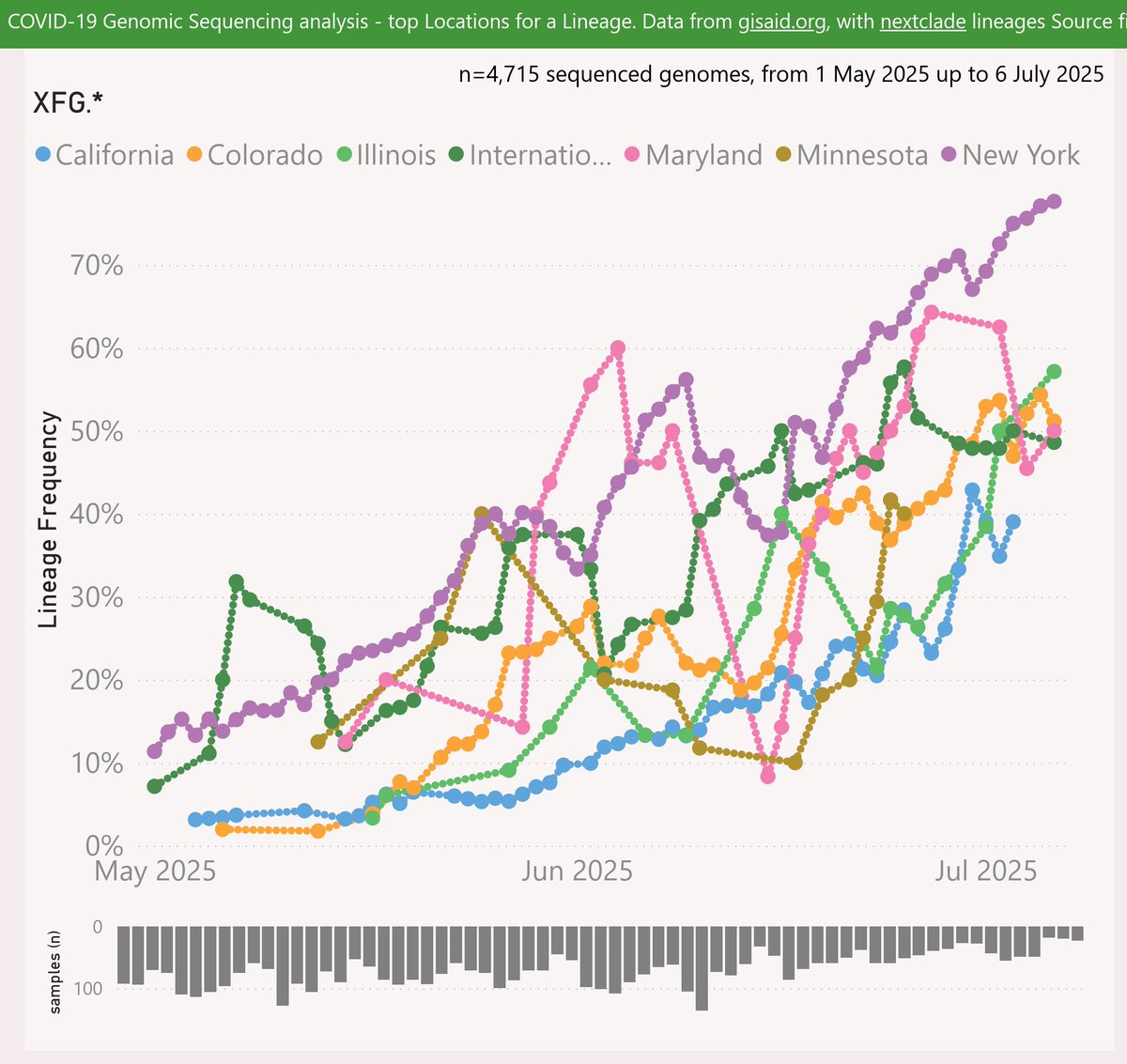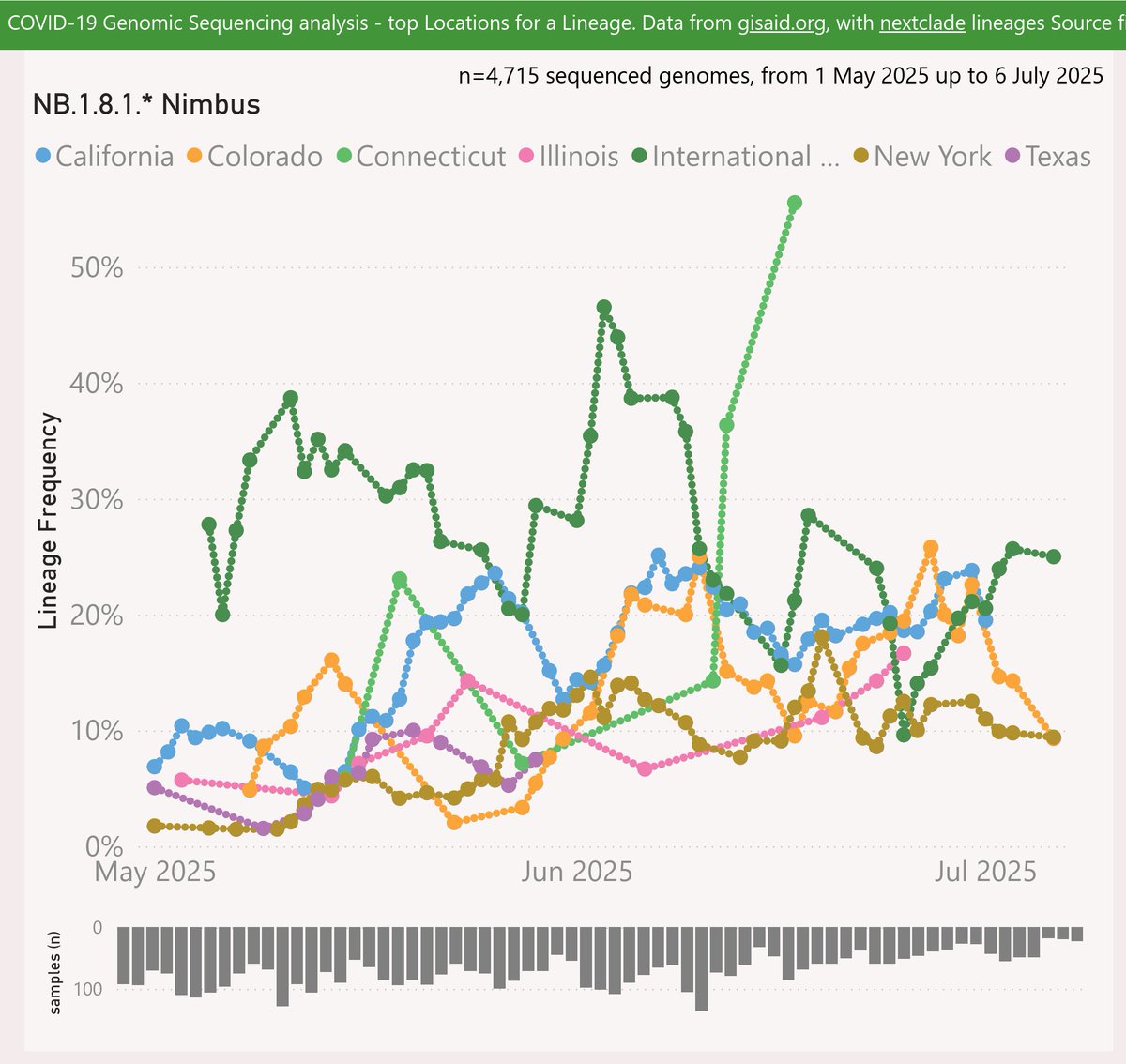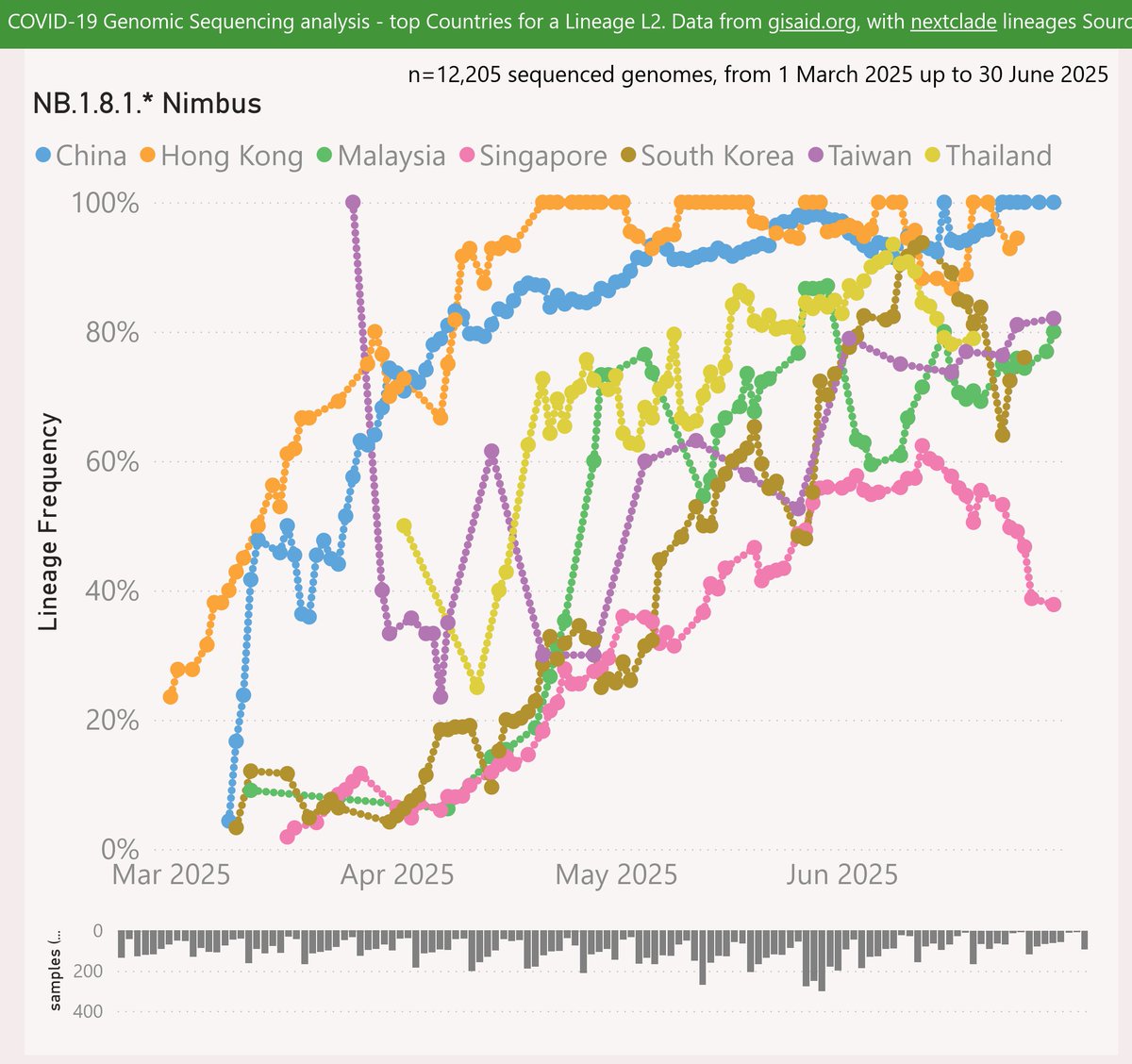With the NB.1.8.1.* "Nimbus" and XFG.* "Stratus" variants carving up dominance around the globe, it is time to ponder which variant might drive the next wave.
The leading contenders at this point are PY.1.1.1 and XFV.
#COVID19 #SARSCoV2 #PY_1_1_1 #XFV #XFZ
🧵
The leading contenders at this point are PY.1.1.1 and XFV.
#COVID19 #SARSCoV2 #PY_1_1_1 #XFV #XFZ
🧵

Both are at low frequencies globally, but are already remarkably widespread geographically. New entrant XGA might be flattered by the low recent sample volumes.
I added some other contenders for monitoring, although they are less significant: XEC.27.2(.1), XFW, XFY and XFZ.
🧵
I added some other contenders for monitoring, although they are less significant: XEC.27.2(.1), XFW, XFY and XFZ.
🧵
PY.1.1.1 is presumed to have originated from India, rising sharply to 11% frequency there in by early July. It has also shown signs of growth in several other countries, notably rising to 3% in Canada.
🧵
🧵

PY.1.1.1 is descended from "FLiRT" variant LF.7.9.1. PY.1.1 added the K679R mutation, then PY.1.1.1 added A435S (same mutation that characterised NB.1.8.1).
🧵
🧵
Here are the International Traveller samples of PY.1.1.1. India has been the most commonly-reported country of origin with 8 samples, vs 1 from every other country shown.
This dataset (mostly arrivals in the US and Japan) is arguably more random.
🧵
This dataset (mostly arrivals in the US and Japan) is arguably more random.
🧵

XFV is a recombinant of LP.8.1 and XFG.3.3.1, with a presumed origin in the Basque Country of Spain in April.
XFV has shown strong growth in Brazil, reaching 23%.
🧵
XFV has shown strong growth in Brazil, reaching 23%.
🧵

XGA is a triple-recombinant of XFJ.4, PY.1 (a descendant of FLiRT JN.1.16.1, by way of LF.7.9.1) and XFG.6.
The earliest samples of XGA were from India and Kazakhstan, then more recently from Spain and the Netherlands.
🧵
The earliest samples of XGA were from India and Kazakhstan, then more recently from Spain and the Netherlands.
🧵

Here's an animated map showing the spread of the XGA variant. The first samples were reported in late June from Pune, India and then Shymkent, Kazakhstan.
It eventually gained a foothold on the Mediterranean coast of Spain and France, but has since been reported more broadly.
🧵
It eventually gained a foothold on the Mediterranean coast of Spain and France, but has since been reported more broadly.
🧵
Locations are approximate - typically country and state/province.
🧵
🧵
Audio credit:
Swarm_Bees_outdoor_stereo by leonseptavaux -- -- License: Attribution 4.0
🧵freesound.org/s/573839/
Swarm_Bees_outdoor_stereo by leonseptavaux -- -- License: Attribution 4.0
🧵freesound.org/s/573839/
I will hold with PY.1.1.1 as my leading contender, based on it’s broader geographical distribution, including many countries with low and/or patchy data volumes.
🧵
🧵

Also there have been 13 samples of PY.1.1.1 reported in the International Traveller samples – the most representative sample set with a global perspective. There has been just 1 XFV and no XGA detected in that data, after several months.
I will continue to monitor this topic.
🧵
I will continue to monitor this topic.
🧵
The usual caveats apply - recent sample sizes are smaller which might skew these results, and “global” sequencing data is dominated by wealthy countries, with many under-sampled regions.
🧵
🧵
Huge thanks to all the dedicated variant hunters who persevere with their crucial work away from the limelight, especially to Federico Gueli for his tips on new lineages, eg
🧵skyview.social/?url=https%3A%…
🧵skyview.social/?url=https%3A%…
Interactive genomic sequencing dataviz, code, acknowledgements and more info here:
🧵 endsgithub.com/Mike-Honey/cov…
🧵 endsgithub.com/Mike-Honey/cov…
• • •
Missing some Tweet in this thread? You can try to
force a refresh



